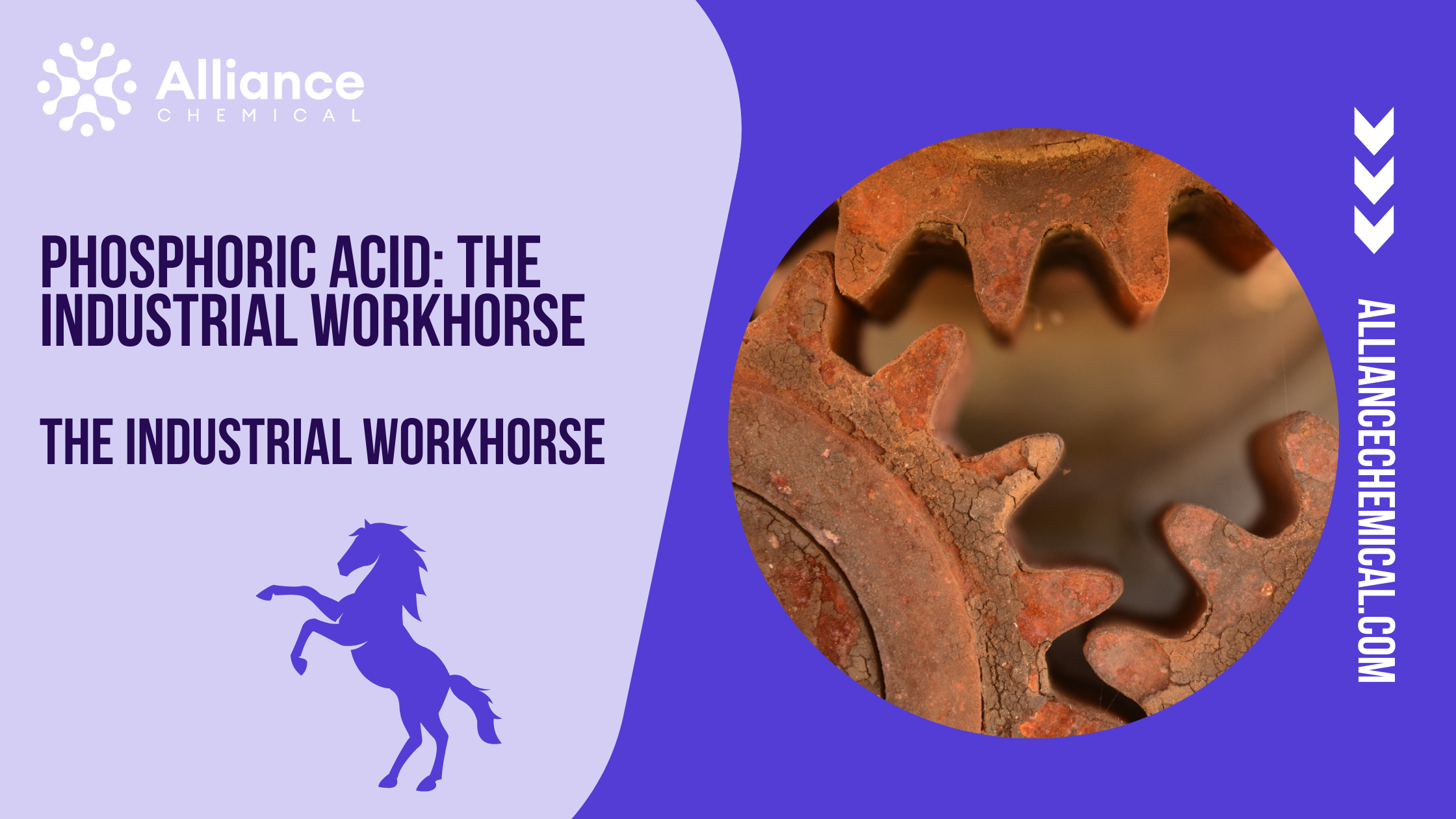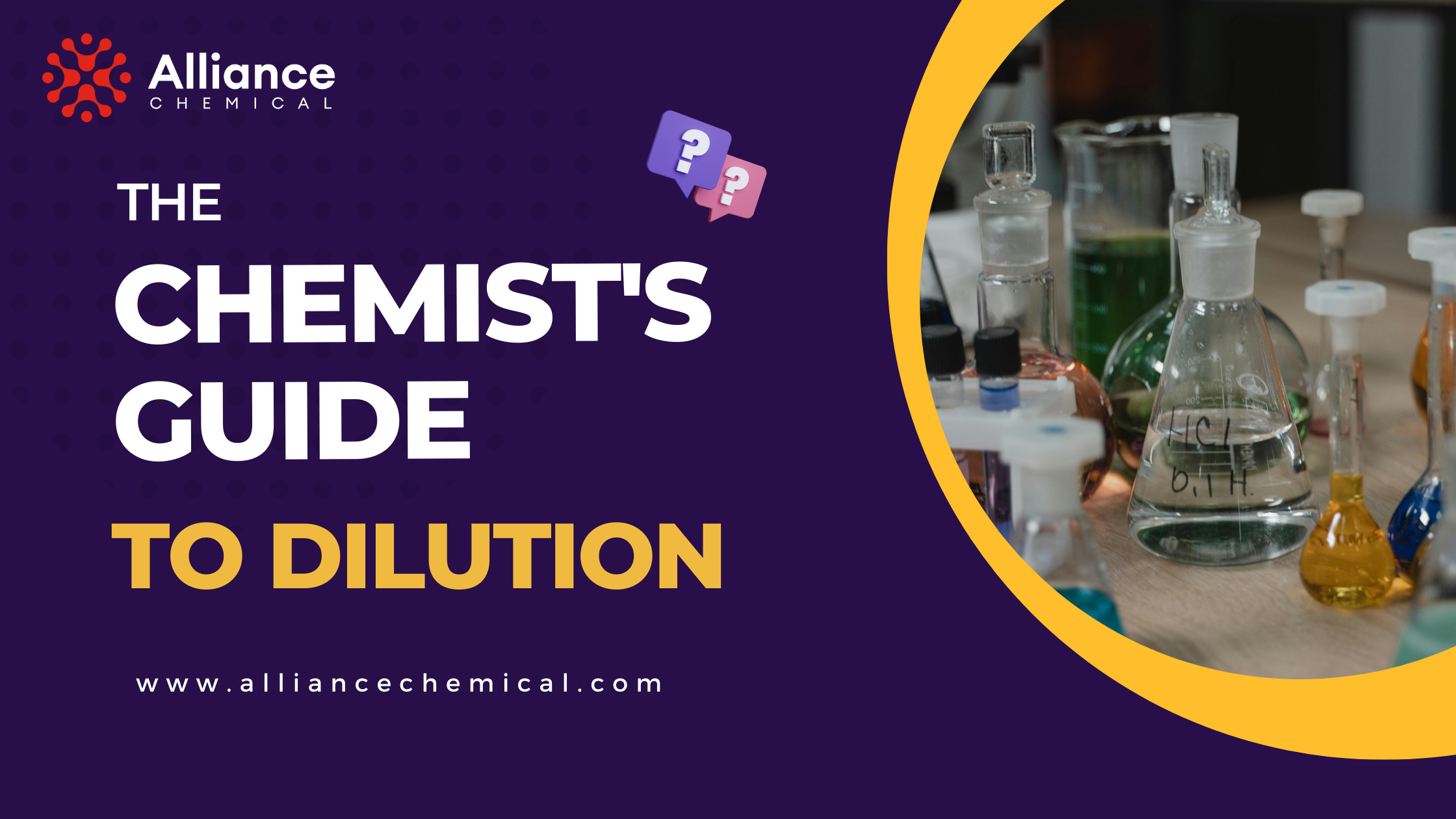
Ferric Chloride vs. Alum: The 2025 Coagulant Showdown for Your Plant
Table of Contents
Summary
An unflinching, data-driven comparison for water treatment professionals. We're cutting through the noise to analyze dosing, sludge costs, and phosphorus removal to help you make the right choice for your plant's bottom line and compliance.
Introduction: The 2025 Treatment Challenge - Beyond Just "Clear Water"
Let's be blunt: the game has changed. For decades, the primary goal of coagulation in many water and wastewater treatment plants was simple: make cloudy water clear. But in 2025, that's just the table stakes. Today's plant managers, engineers, and municipal leaders are facing a brutal trifecta of pressures: iron-clad regulations on nutrient removal (especially phosphorus), skyrocketing sludge disposal costs that gut operational budgets, and the relentless need to optimize every chemical dollar spent. The old way of doing things, the "if it ain't broke, don't fix it" mentality, is no longer good enough. It's a direct path to non-compliance and financial inefficiency.
At the center of this battle are the two titans of coagulation: **Aluminum Sulfate (Alum)**, the long-reigning, reliable champion, and **Ferric Chloride**, the powerful, aggressive challenger. These aren't new chemicals, but the context in which they compete is radically different. The question is no longer "which one works?" but **"which one wins in today's demanding environment?"** Is the time-tested reliability of alum still the best choice, or does the potent and versatile performance of ferric chloride offer a decisive competitive edge that modern facilities can't afford to ignore?
This comprehensive guide from Alliance Chemical is a no-BS, head-to-head showdown. We're going to dissect the real-world performance of these coagulants on the metrics that matter *now*: dosing efficiency, pH impact, sludge characteristics, phosphorus removal capabilities, and crucial 2025 cost considerations. As a trusted supplier of both high-quality Ferric Chloride and Aluminum Sulfate (Alum), we are uniquely positioned to offer an unbiased, expert perspective to help you make the smartest, most profitable decision for your facility.

Chapter 1: Coagulation 101 - The Science of Clearing Water
To properly compare Ferric Chloride and Alum, it's essential to first understand the fundamental process they drive. Coagulation is a sophisticated chemical and physical process designed to remove tiny, suspended, and colloidal particles that cause turbidity, color, and cloudiness in water. These particles are often so small (typically less than 1 micron) and stable that they would never settle out on their own, even over extended periods.
The Three-Step Process:
- Coagulation (Charge Neutralization): Most microscopic particles suspended in water (like clays, silts, organic matter, and some bacteria) carry a negative electrical surface charge. These like charges cause the particles to repel each other, keeping them in a stable, dispersed state. The coagulation step involves adding a chemical coagulant—a positively charged metal salt like Ferric Chloride (Fe³⁺) or Alum (Al³⁺). The highly positive metal ions neutralize the negative charges on the suspended particles. This destabilization is the critical first step, allowing the particles to no longer repel each other.
- Flocculation (Particle Agglomeration): After the charges are neutralized, the water is subjected to slow, gentle mixing in a flocculation basin. This gentle agitation encourages the destabilized micro-particles (microfloc) to make contact and collide with one another. As they collide, they stick together, forming progressively larger, visible, and more substantial clumps known as "flocs."
- Sedimentation (Settling): Once the flocs have grown large and dense enough, the water is moved into a quiescent basin or clarifier with minimal turbulence. Here, gravity takes over. The heavy flocs settle to the bottom of the tank, forming a layer of sludge. The water at the top, now cleared of the vast majority of suspended particles, is then decanted for further treatment (like filtration and disinfection).
This coagulation-flocculation-sedimentation sequence is a cornerstone of both drinking water and wastewater treatment worldwide, highly effective at removing turbidity, color, natural organic matter (NOM), and even some pathogens that are entrapped within the flocs.

Chapter 2: The Case for Alum - The Time-Tested Standard
Aluminum Sulfate, known universally in the industry as **Alum**, has been a pillar of water treatment for over a century. Its long history of use means its performance, dosing requirements, and operational quirks are deeply understood by generations of plant operators. It's the reliable, familiar tool in the toolbox, and for many years, it was the undisputed king of coagulation.
Alum's Profile and Mechanism of Action
With the chemical formula Al₂(SO₄)₃, alum is most commonly supplied as a liquid solution, like Alliance Chemical's 50% Alum Solution. When dosed into water that has sufficient alkalinity, alum undergoes hydrolysis to form aluminum hydroxide [Al(OH)₃]. This compound is not just a simple precipitate; it forms a sticky, gelatinous, amorphous floc with a high surface area. This floc acts like a chemical net, physically sweeping through the water column, enmeshing fine colloids and adsorbing dissolved organic molecules, effectively clarifying the water.
The Argument for Sticking with Alum:
- Proven Reliability & Familiarity: It works, and its behavior is well-documented. For plants with very stable source water and traditional treatment objectives (i.e., primarily turbidity removal), alum is a highly predictable and effective performer. Operators are comfortable with it.
- Preference in Potable Water Treatment: In many drinking water applications, alum retains a historical and aesthetic preference. It produces a white, fluffy floc and carries a lower risk of imparting any residual color to the finished water, which can be a concern with iron-based coagulants if dosing is not perfectly controlled. There is also sometimes a public or regulatory preference for aluminum over iron in potable water systems, despite both being effectively removed in a well-run plant.
- Compatibility with Existing Infrastructure: Many older treatment plants were designed and built specifically around the settling characteristics of alum's lighter floc, with larger clarifiers and specific sludge handling equipment.
The Critical Limitations in the Modern Treatment Era:
Alum's Achilles' Heel: Where the Champion Stumbles
While reliable under the right conditions, the operational constraints of Alum are precisely where its status as the default choice begins to crumble under the intense pressures of modern treatment demands. These are not minor inconveniences; they are major operational and economic liabilities.
- A Finicky and Narrow pH Window: Alum is notoriously sensitive to pH, performing optimally only within a tight range of approximately **pH 6.0 to 7.5**. If the raw water pH drifts outside this window, its effectiveness plummets, coagulation can be incomplete, and the risk of leaving soluble aluminum in the treated water (a regulated contaminant) increases dramatically. This sensitivity often necessitates the costly and continuous co-addition of an alkali like caustic soda or lime to buffer the water and maintain the pH in the "sweet spot," adding another layer of chemical cost and operational complexity.
- Voluminous, High-Water-Content Sludge: The light, gelatinous nature of alum sludge is its biggest economic drawback. It is infamous for being difficult to dewater. It binds a large amount of water within its floc structure, resulting in significantly larger final sludge volumes. In an era where landfilling and hauling costs are constantly rising, producing more sludge is a direct and painful hit to the operational budget.
- Mediocre to Poor Phosphorus Removal: While alum can precipitate some phosphorus as aluminum phosphate (AlPO₄), the reaction is significantly less efficient and less complete than with iron-based salts. Attempting to meet today's ultra-low phosphorus discharge limits (often <0.1 mg/L or even lower) with alum alone is often technically challenging and almost always economically unfeasible, requiring prohibitively high and costly doses.
For any facility grappling with nutrient limits, sludge disposal costs, or variable influent water, these limitations show that while Alum is a venerable tool, it may no longer be the right tool for the modern job.
Chapter 3: The Case for Ferric Chloride - The High-Performance Challenger
In response to the limitations of alum, **Ferric Chloride (FeCl₃)** has moved from being a niche "alternative" to the primary, high-performance coagulant for many of the most demanding water and wastewater applications worldwide. Its robust chemical properties offer direct, effective solutions to the primary weaknesses of alum, making it a powerful and highly versatile tool for modern treatment plant optimization.

The Ferric Chloride Mechanism and its Inherent Advantages
Supplied as a dark, acidic liquid solution, such as Alliance Chemical's 40% Ferric Chloride Solution, FeCl₃ works in a similar way to alum. It hydrolyzes in water to form ferric hydroxide [Fe(OH)₃] precipitates. However, the nature of this iron-based floc and its behavior in water are distinctly different from its aluminum-based counterpart.
- An Incredibly Wide and Forgiving Operational pH Range: This is arguably ferric chloride's most significant operational advantage. It maintains high coagulation efficiency across an exceptionally broad pH range, typically from **pH 4.0 all the way up to pH 11.0**. This versatility means it can effectively treat a vast variety of raw water and wastewater streams without the need for constant, precise, and often costly pre-treatment pH adjustment. It is far more robust and forgiving to the inevitable swings in influent water chemistry that plants experience, leading to a more stable and easier-to-manage process.
-
Dense, Heavy, and Fast-Settling Floc: The ferric hydroxide floc formed by ferric chloride is significantly denser, heavier, and more compact than the light, fluffy, gelatinous floc produced by alum. This key physical difference leads to several substantial operational benefits:
- Faster Settling Rates: The denser floc settles out of the water column much more rapidly. This can allow a plant to increase its hydraulic throughput (treat more gallons per minute) in its existing clarifiers or can allow for smaller, more efficient clarifier designs in new plant construction.
- Superior Sludge Dewatering and Compaction: The robust and less gelatinous nature of the iron sludge allows it to be dewatered to a much higher cake solids percentage (meaning less water in the final sludge) using standard mechanical equipment like filter presses, belt presses, or centrifuges. It's not uncommon for ferric sludge to dewater 20-30% better than alum sludge from the same water source.
- Drastic Reduction in Sludge Disposal Costs: A drier, denser sludge directly translates into a lower final sludge volume and weight. Since disposal costs are almost always based on volume or tonnage, this leads to a direct and significant reduction in the operational expense of sludge hauling and landfilling. This is often the single largest economic driver for switching from alum to ferric chloride.
- Exceptional Phosphorus Removal Efficiency: This critical advantage will be detailed further in the next chapter, but ferric chloride is an outstanding precipitant for phosphorus, making it the default choice for wastewater treatment plants facing strict nutrient discharge limits.
Acknowledging and Managing the Trade-offs:
The immense power of ferric chloride does come with specific handling considerations. It is a dark-colored and highly corrosive liquid. This means it can stain concrete and equipment if spilled, requiring good housekeeping practices. More importantly, it necessitates the use of appropriate corrosion-resistant materials for storage tanks, pumps, and dosing systems (e.g., FRP, PVC, rubber-lined steel, or specific high-grade alloys). However, for most modern industrial facilities that are already equipped to handle corrosive chemicals, these are standard and manageable engineering considerations. The substantial operational and economic benefits provided by ferric chloride almost always far outweigh these material compatibility requirements.
Chapter 4: The 2025 Showdown - A No-Nonsense Coagulant Comparison
Let's put these two coagulants in the ring and score them on the factors that truly impact a plant's performance and bottom line in 2025. This head-to-head analysis cuts to the chase.

Round 1: Phosphorus Removal
With nutrient regulations becoming the driving force in wastewater treatment, this is a critical fight. Ferric chloride's ability to form highly insoluble ferric phosphate gives it a knockout punch. To achieve the same low phosphorus levels, plants often have to use a much higher molar dose of alum, leading to higher chemical costs and more sludge.
Verdict: Ferric Chloride, by a landslide.
Round 2: Sludge Production & Disposal Costs
Sludge management is the silent budget killer for many facilities. The name of the game is creating the driest, densest cake possible to minimize hauling volume. The light, gelatinous nature of alum sludge, with its high water content, is a significant liability. The dense, heavy iron sludge from ferric chloride settles faster and dewaters far more efficiently.
Verdict: Ferric Chloride. The savings on sludge disposal alone are often enough to justify a switch.
Round 3: Operational Flexibility (pH Range)
Plant operations are never perfectly stable. Influent pH can swing with storm events or changes in industrial discharges. Alum's narrow optimal pH window (6.0-7.5) makes it brittle; performance can fall off a cliff if the pH deviates. Ferric chloride's ability to perform effectively from pH 4 to 11 provides a massive buffer, ensuring consistent treatment performance even when conditions are chaotic.
Verdict: Ferric Chloride, for its sheer robustness and operational forgiveness.
Round 4: Dosing Efficiency & Overall Chemical Cost
On a direct weight-for-weight basis, ferric chloride is often a more efficient coagulant, meaning a lower dose (in ppm) is required to achieve the same level of turbidity removal. When you factor in its superior performance in phosphorus removal and its potentially lower need for co-dosed alkali (due to the wider pH range), the total cost of chemical treatment is frequently lower with ferric chloride, even if the per-gallon price is comparable to alum.
Verdict: Ferric Chloride, based on total treatment cost optimization.
Chapter 5: The Decision Framework: Which Coagulant is Right for YOUR Plant?
The data points to a clear trend, but the final decision is always site-specific. Here’s a straightforward framework to guide your evaluation.
Choose Aluminum Sulfate (Alum) If...
✅ Your primary application is **potable (drinking) water treatment** where aesthetics (zero color addition) and a long history of use are the highest priorities.
✅ You **do not** have a stringent phosphorus removal limit to meet.
✅ Your source water chemistry is **very stable** and naturally falls within Alum's optimal pH range (6.0-7.5).
✅ Your existing sludge handling systems are specifically designed for light, gelatinous sludge and cannot be easily retrofitted.
Choose Ferric Chloride If...
✅ You operate a **wastewater treatment plant** with a need for **superior phosphorus removal**.
✅ **Reducing sludge volume and disposal costs** is a major economic driver for your facility.
✅ Your influent water has **variable or fluctuating pH** and you need a robust, forgiving treatment process.
✅ You are focused on **optimizing the total cost of chemical treatment** and maximizing efficiency.
The Ultimate Tie-Breaker: The Jar Test
No guide can replace real-world data from your own water. The most definitive way to determine the best coagulant for your facility is to conduct a **side-by-side jar test**. This simple, low-cost laboratory procedure involves taking samples of your raw water and treating them in parallel with different doses of both alum and ferric chloride. It allows you to directly observe floc formation, settling speed, and treated water clarity, and the resulting water can be analyzed for key parameters like pH, alkalinity, phosphorus, and residual metals. It takes the guesswork out of the equation.
The Verdict for 2025: Performance Under Pressure Declares the Winner
The debate between Ferric Chloride and Alum is a long-standing one in the water treatment industry. For decades, alum has been a trusted and reliable staple. However, as the challenges facing treatment facilities evolve in 2025, the performance characteristics of the chosen coagulant are under greater scrutiny than ever before. While alum remains a highly effective coagulant in specific applications, particularly in some areas of drinking water treatment, the evidence strongly suggests that for a growing number of modern challenges, **Ferric Chloride has emerged as the decisive winner.**
Its key advantages—a significantly wider effective pH range providing operational robustness, the creation of dense, easily dewatered sludge that drastically reduces disposal costs, and, most critically, its superior efficiency in removing phosphorus to meet stringent nutrient regulations—present a compelling technical and economic case. For wastewater treatment plants and many industrial water treatment applications, these benefits directly address the most significant operational and regulatory pain points of today.
The choice is ultimately a site-specific one, best confirmed by on-site jar testing. However, for any facility looking to optimize its chemical spend, reduce sludge disposal costs, enhance process stability, and reliably meet modern nutrient removal limits, a thorough evaluation of Ferric Chloride is no longer just an option; it's a strategic imperative. As your expert partner in water treatment chemistry, Alliance Chemical is ready to support your evaluation with high-quality products and the technical information you need to make the best decision for your plant's future.
Ready to Slash Sludge Costs and Dominate Phosphorus Limits?
The data is clear. It's time to see if Ferric Chloride can revolutionize your plant's efficiency and budget. Alliance Chemical provides the high-quality coagulants and expert support you need to make the switch with confidence.
Shop High-Performance Ferric Chloride Shop Alum Solutions








